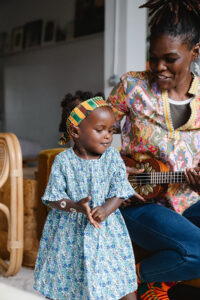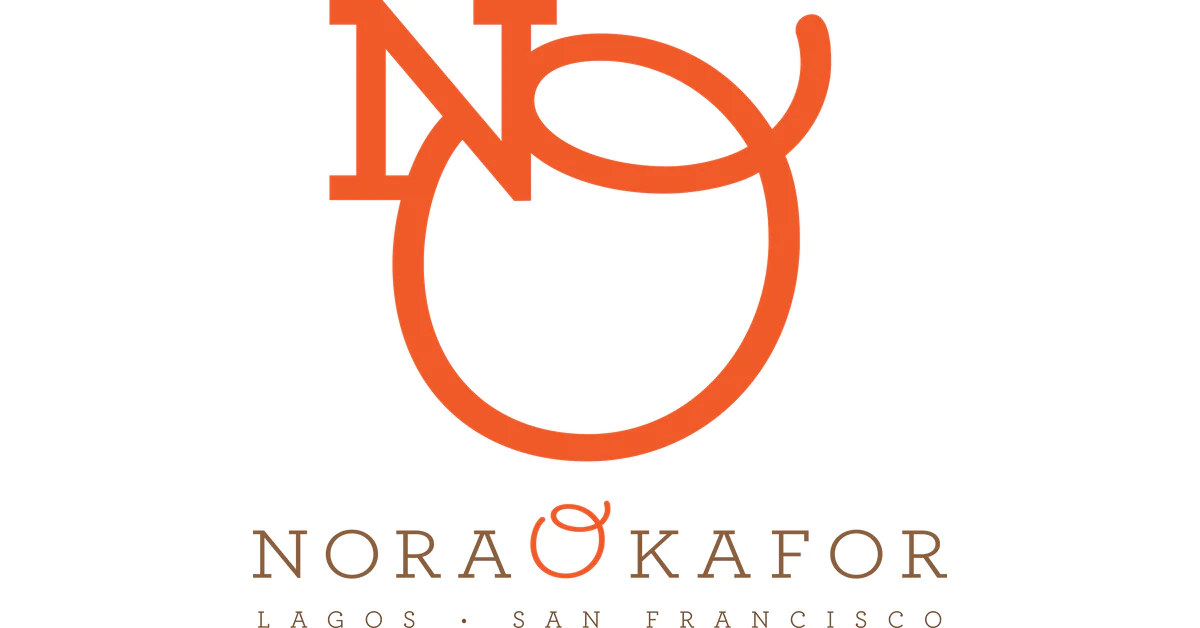Stella Jean in Burkina Faso conducting product development research
Since the world is a “global village,” individuals across the globe are influenced by various existing cultures. In this article, we’ll look at how West Africa influences global style and our focus will be on home décor, fashion, and music – Afrobeats.
Home Décor
West Africa is rich in cultural heritage and distinguished interior design. Little wonder why many folks seek ways to blend lasting West African decors into their homes.
Gratefully, the West African style is compatible with everything; be it modern, eclectic, or minimalist design. Also, the varying colors and textures of West African textiles, sculptures, and artworks allow you to easily integrate them into contemporary design.
West African decoration is mainly influenced by nature, traditional wood sculptures, and flamboyant textiles. So, designers look out for handmade fabrics, artifacts, and accessories that are culturally significant. Top on the list is animal prints, ornamental baskets, tribal masks, pottery, etc. The end goal is home décor that is both calming and captivating.
For example, Eva Sonaike, a London-based, Nigerian designer creates interiors and home furnishings with bold colors and West African patterns. According to a report by Africa.com, Eva started off using Ankara from across West Africa to make cushions for friends. Eventually, her products were displayed in stores, and she later branched out to design her own textiles. Her range of decadent poufs, throw pillows, and rug décor is elegant and profound. Exactly what to expect from a West African inspired design.
Get your home décor and accessories inspired by West African textiles here
For many centuries, African women have been the ones to weave plain fabrics and carpets, many of which have African-themed motifs on them. Impressive! In recent times though, textile companies create various pieces based on African patterns.
Now, if you want the feel of vibrant West Africa in your home, go for items that are made from natural materials like a latex mattress, woven drapes, and wooden frames. For a more traditional look, you can add ceramic, antiques, and wallpaper or a wet plaster fresco connected to an African tale.
Additionally, you can put sisal mats on top of a plain but stained concrete floor and paint your walls in neutral colors like beige, cream, or brown. Also, paints with a rough sandy texture give the most West African vibes. Painting your walls in rich clay or terracotta colors is a good choice too. And you can get more ideas here.
Fashion

The imprints of West African culture are evident in most of the fashion trends in the world today. Moreover, fashion trends inspired by African heritage are both gorgeous and daring. Some popular ones are:
-
- “Puffy sleeves” which adds more style to casual attire, is a mash-up of local African fashion and garments from the 1980s. Here, the rest of the clothing is kept simple and classic to draw emphasis to the sleeves.
-
- “Off-the-shoulder” is another trend inspired by some of Africa’s most fashionable women in the 1980s. It is designed for women who wish to make a striking statement without being overly exposed. This style is great with both blouses and dresses.
-
- West Africa also influenced the “Kaftan” trend. It is a flowy and stylish attire, popular for its versatility and comfort. Kaftan is the go-to outfit for both men and women. Get yours here.
-
- The wearing of statement jewelry has its roots in West Africa too. In the 1960s and 1970s, African female revolutionaries rocked hoops as a symbol of their strength and solidarity. Now, we have raveled designs that would make any jaw drop.
-
- Vibrant Prints are also associated with African people. West Africa provides the globe with the popular African wax print or Ankara.
Let’s take it a bit further and see the prominence of West Africa in global fashion shows:
-
- Louis Vuitton’s Spring/Summer 2017 campaign featured a combination of African tribal prints and textiles.
-
- Also, in the 2016 Golden Globe Awards, Scandal actress, Kerry Washington donned a Dolce and Gabbana dress which seemed to take inspiration from Aso-Ebi, the traditional dressing style worn in most Nigerian events.
-
- Again, Celine’s 2013 Autumn collection featured dresses and purses made from the large, checkered bags popularly called “Ghana-must-go bags” while Louis Vuitton simply added their stamp to the original design.
-
- One-time, Japanese designer Junya Watanabe tried to recreate the culture of African women walking elegantly with a load atop their heads.
-
- West Africa’s fashion styles are products of hand weaving, dyeing, and printing. Although the westernized style of dressing has infiltrated African traditional clothing, African dressing styles still speak of cultural traditions, heritage, and pride.
-
- And like Sagal Mohammed from gal-dem reported, “now more than ever, African designers are really taking charge of their own narratives and telling people authentic stories”
Add some flamboyant African styles to your collection from here.
Music – Afrobeats

When it comes to global entertainment, the influence of West African Afrobeats cannot be swept under the rug. To make things clear, Afrobeats is a relatively ‘new’ music genre from West Africa, mainly Nigeria and Ghana. Starting in the early ’90s, this genre has shaken up the global music industry.
Afrobeats is a mix of upbeat, fun, and energetic melodies to make the listeners dance. It combines West African pop music with western rap, bashment, dancehall, R&B, and EDM.
Burna Boy, Davido, Wiz Kid, Rema, JoeBoy, and Tiwa Savage are part of the larger group of Afrobeats artists who keep the balls rolling. They have been collaborating with international artists, driving the spread of the genre across the globe.
In 2016 for example, Drake’s hit One Dance, featured Nigerian artiste Wizkid. Also, Tiwa Savage’s 2021 hit Somebody’s Son featured American songstress Brandy. Ed Sheeran and FireBoy DML’s partnership in Peru is remarkable too. And in Jamaica, popular Afrobeats like Buga, Calm Down, Finesse, Peru, etc. are creating a storm, especially in the dancehall space.
On the flip side, some US artists including Ciara and Major Lazer, have fused Afrobeats sounds and featured African artists in their music. In 2019, Jamaica’s Popcaan collaborated with Nigerian artist Davido to create Risky and, more recently, performed on TSA (Toni-Ann Singh) alongside Burna Boy, another Nigerian Afrobeats artist.
Where it started
The growth of Afrobeats from West Africa to the rest of the world can be traced to the late Nigerian artist, Fela Anikulapo Kuti, the pioneer of Afrobeat. Now, Afrobeat is a genre with jazz, soul, and Ghanaian highlife, and the polyrhythmic drumming foundations of the Yoruba, Ewe, and Ga tribes.
Fela’s personal story resonates with the balance of West African traditions and movements across the West. He left his motherland for England in 1958 to enroll at the Trinity College of Music in London. Later, he formed his Koola Lobitos group with a West African and Caribbean lineup, blending jazz and highlife. The Koola Lobitos enjoyed initial success upon his return to Nigeria, but their popularity faded when his mother advised him to “start playing music your people understand, not jazz.” This led him to Ghana in 1967 where he birthed Afrobeat.
During a 10-month tour in the U.S. in 1969 with Nigeria 70, Fela discovered he should use African music to play jazz and not the other way around. Returning to Nigeria, the band took on a new name Africa 70, using call-and-response musical arrangements to keep the African element at its core.
Moreover, relevant events within that period like visits from African-American artists e.g James Brown and the legendary Soul-to-Soul concert held in Accra in 1971, further inspired a young generation of highlife bands and fans across West Africa.
Meanwhile, in Ghana, government irregularities combined with a poor economy pushed some Ghanaian musicians to leave the country to relocate abroad. Hamburg, a North German city witnessed the rising of popular early Burger Highlife musicians like Lee Dodou, George Darko, and Pat Thomas, who had honed their craft in big dance highlife bands.
And so it continued through the 1990s and 2000s, with more talented West Africans coming to the limelight, and entertaining the world with good musical jams.
Needless to say, West African artists are setting the pace for global pop via streaming platforms and curated festivals. All over the world, Afrobeats has taken nightclubs, parties, and music charts by storm. It goes to show the depth and distinction of music springing up from West Africa.
Conclusion
West Africa has influenced global styles in more areas than home decor, fashion, and Afrobeats. Truth is, the influence will only get stronger because West Africans are a fusion of talent, creativity, and resilience. So, expect more outstanding home decors, more breathtaking fashion trends, and more Afrobeats that will remain on “replay” in the future. Don’t miss out on the buzz, get the best West African inspired style here.
